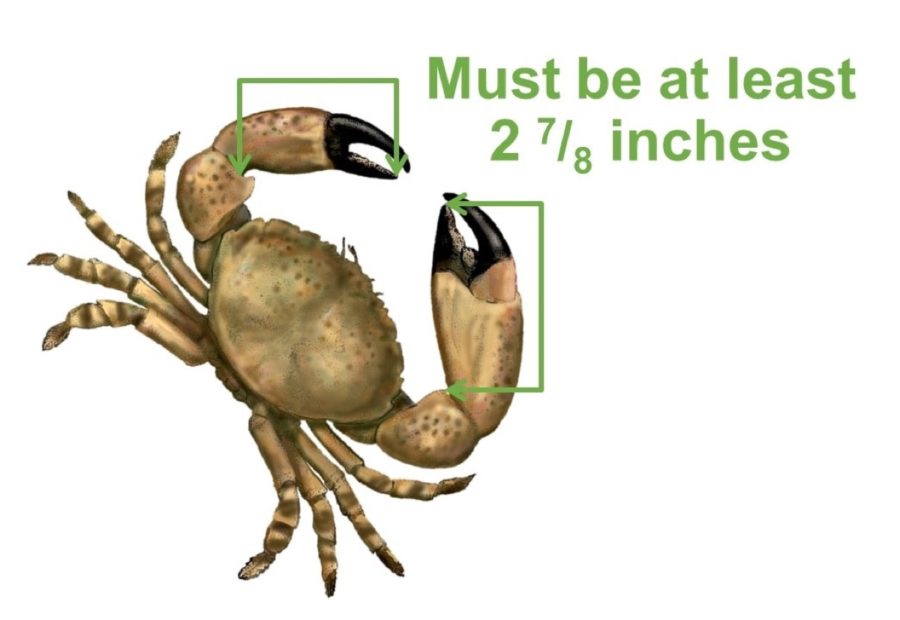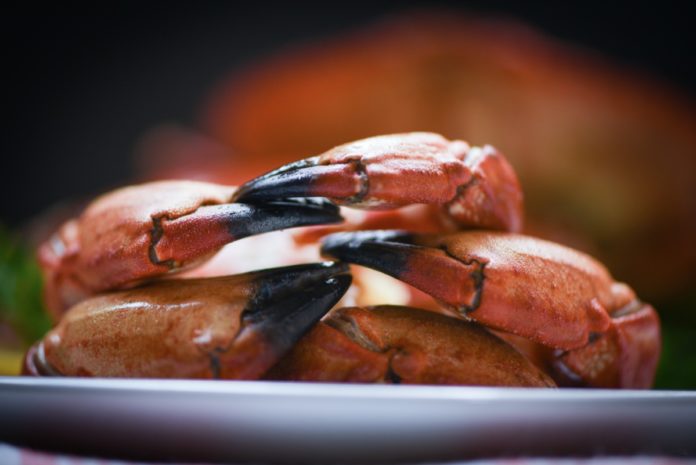For the first time in memory, there will be new rules governing the stone crab fishery in Florida when the harvesting starts on Thursday, Oct. 15. Fishermen will be searching out bigger claws (1/8th larger, but still) and the season is two weeks shorter, now ending on May 2.
For consumers, it means there will be fewer “medium” claws to be had. Stone crabs are grouped by size for sale by the pound: medium, select, large, jumbo and colossal.
“Medium stone crab will likely be more scarce this year, but maybe by the end of the season they will come back,” said Mike Priebel, manager of Keys Fisheries, a commercial fish house and retail operation. “There might not be as many ‘budget’ mediums that we used to sell in the past.”
Other regulations affect commercial fishermen only: a regulated size of “checker” boxes (where crabs are stowed alive until declawed and returned to the water) and new trap ring sizes coming before the 2023/2024 season.
The Fish and Wildlife Commission (FWC) said the changes to the fishery are to help revitalize what it says is a declining resource. According to the FWC, it has been steadily declining since 2000, and some have calculated the decrease at 20 percent.
“The new rules are a conservation effort,” said Monroe County’s FWC spokesperson Bobby Dube. “Biologists and researchers feel that the stone crab fishery is a little stressed, a little overfished. This small measure will increase the population.”
What do the new rules mean for recreational stone crab fishermen? In Florida, recreational fishermen who have a current saltwater fishing license can have up to five traps per person. Previously, recreational fishermen needed to put ID on the traps, but this year, it’s more official. Stonecrabbers are required to register for stone crab trap registration numbers at gooutdoorsflorida.com. Then they must affix the numbers permanently to the trap.
Recreational harvesters’ daily bag limit is one gallon of claws per person, or 2 gallons per vessel.
State officials are still encouraging — not requiring — the removal of only one claw, rather than both. Leaving the crab one claw increases their chances of thriving and more quickly regenerating the missing claw.
None of the laws are expected to affect the market price of stone crab per pound, other than that the smallest of legal crabs — the medium size — won’t be as readily available. In 2019, stone crabs cost anywhere from $17 to $42 depending on the size.
Commercial fishermen’s stone crab catch is boiled as soon as it reaches the dock every afternoon and then flash frozen.
“If the boats come back in the early afternoon, we could have them for sale on Thursday, Oct. 15 at the Clawsa Blanca, the upstairs bar at Keys Fisheries,” said Priebel. “If not, definitely the next day.”
One thing’s for sure: everyone is going to need a new stone crab gauge.

Tips & Tricks
- Never take claws from egg-bearing stone crabs.
- It’s illegal to spearfish (or otherwise crush or puncture the carapace) of a stone crab.
- If the trap is not in regular use, remove it from the water to prevent animals from being trapped indefinitely.


























